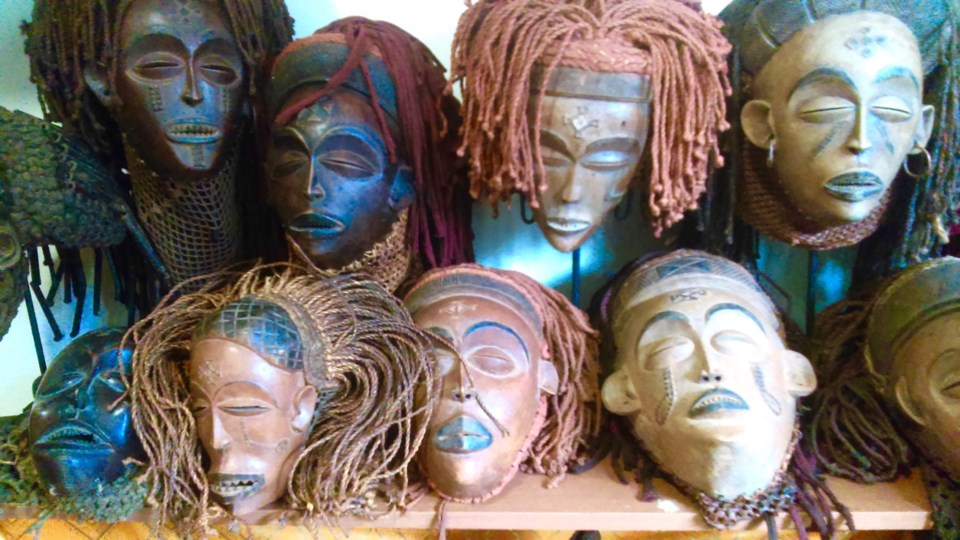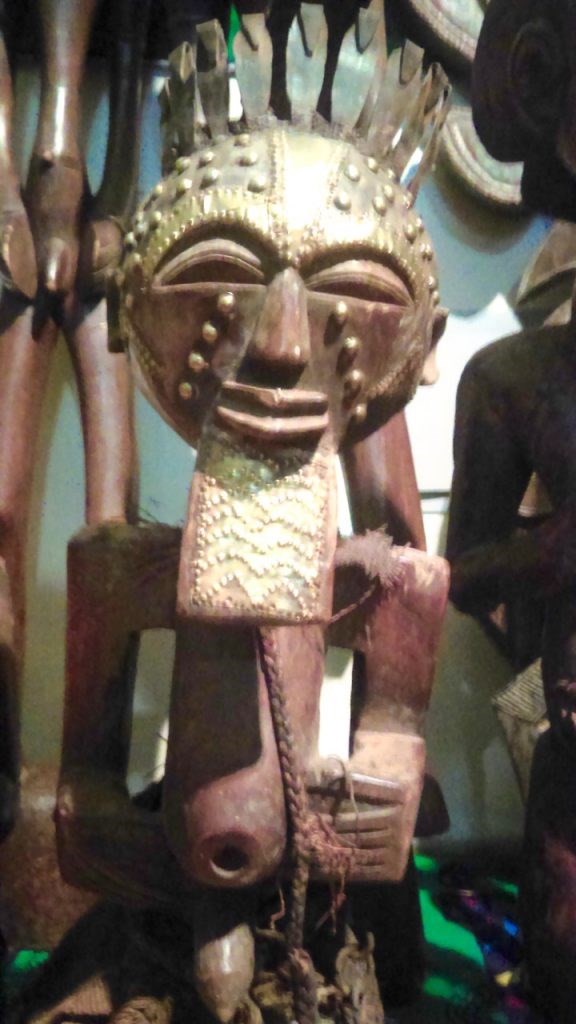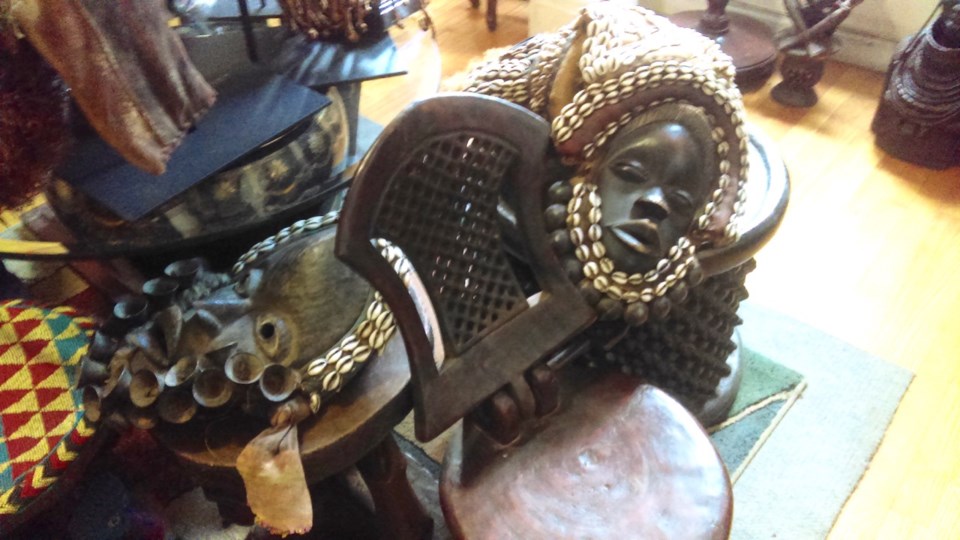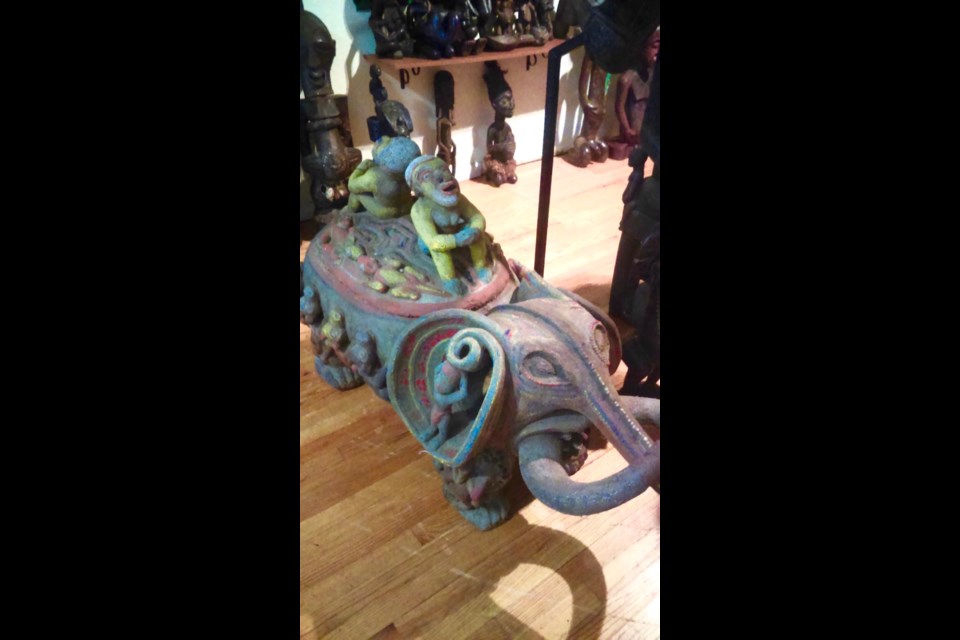
"I just want our children to see that they come from brilliance; that they're genius," said Vira Lynn Jones, founder of The Bedford Stuyvesant Museum of African Art.
Founded in 2006 as a 501(c)3 organization, the museum, located at 1157 Bedford Avenue, opened in 2014 for private viewing only, as "it is still in its incubation" stage, said Jones.
The core of the museum is its world-class permanent collection of authentic artworks, masks, statues and hand-crafted furniture, spanning the 55 countries of Africa. Jones said she founded the museum to provide underserved youth of Central Brooklyn an appreciation and deeper understanding of the diverse art and culture of their African ancestors.

BSMAA achieves its mission through in-museum and outreach tours, video presentations, lectures, films, youth and adult workshops, story-telling, artists-in-residence programs, partnerships with other arts organizations and museums and visiting scholars, as well as school and community outreach programs.
For 30 years, Jones has meticulously collected pieces she purchases directly from African art runners, many of whom she began meeting while serving as a volunteer in the Peace Corps in Ghana in the 80s.
But she said her love of African art began even before then, as a child.
"I had relatives who were foreign service officers who traveled around Africa in the 50s and 60s. I heard these great stories and saw the great art they brought back from Africa. So when I finished undergrad school, the only way I could travel and live in Africa was to join the Peace Corps," said Jones
"So while I was there, I began to educated myself to African Art and its history and began seriously collecting. What happens is, as the African people come back from their villages, they'll call me and say, 'I have a nice piece I would like you to look at.' And then they would sell it to me. But I didn't have any place to put it. So I started putting it in storage here in the U.S.
"What they bring to me is probably discarded... Like the masks; the carver makes the mask to fit [a person's] face, but as [he or she] grows, new ones are made, and the old ones are discarded."
There's an incredible body of art work from the Bakota, Kuba and Chukwe tribes of the Democratic Republic of Congo; stone carvings from the Shona people of Zimbabwe; elaborate beaded artwork from Ghana; fertility statues from the Baole of Ivory Coast; ceremonial masks from all across Nigeria and much much more.
Unlike some of the delicate and crumbling 400- and 500-year-old artifact pieces you might observe at any one of the major legacy art museums, the pieces at BSMAA are in near-perfect condition, mostly because they are only between 50-75 years old.
"If you want old, like dating back a few hundred years, then we're talking the MET. They have the million-dollar pieces, and I can't afford that," says Jones who purchases every piece out of her own personal reserve. "But still, I buy quality, authentic African Art. I have those that will be worth a lot of money in another 50 years."
Jones said she hopes to open the museum to the general public by 2018. Currently, she keeps it all on the first floor of her three-story walkup. She said she's waiting for predevelopment funds which will allow her to build the museum out, across two buildings (including the building she owns next door), a total of 4,000 square feet of space.

Jones refers to the museum as one of the neighborhood's "best kept secrets." Limited art funding has meant all of the museum's progress has come right out of her pocket, providing very little opportunity for marketing or publicity. Most residents do not even know it exists. But she says, with confidence, "Trust me, that won't be for long."
Jones has complete faith that when the arts funding finally rains down on the tiny museum, it will likely pour. Until then, the goal is to use the current space as an intimate learning space for children and private art collectors.
"I want people to come in and learn about the different countries of Africa and their practices through the study of the art.
"The poverty, the AIDS, the Ebola, the wars the media always talks about when they talk about Africa, that's not most of Africa. Africa has 55 countries and represents so much more.
"I want children in this neighborhood to learn about their roots. The words 'brilliant,' and 'genius' aren't words they hear often to describe them. I want them to come in and see that they do, in fact, come from genius."
On Sunday, October 9, at the Brooklyn Music School, BSMAA will hold its third annual Nelson Madiba Mandela Humanitarian Awards, a cultural tribute to the "warriors," the men and women in uniform. For more information on the Awards program, go here.
For more information on the Bedford Stuyvesant Museum of African Art, visit their website.




